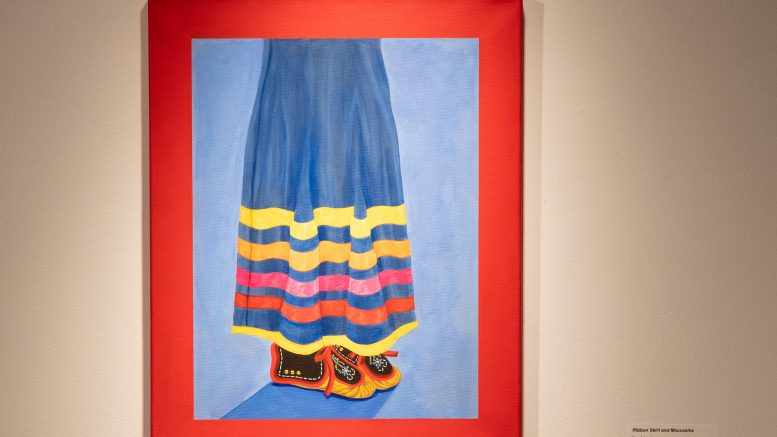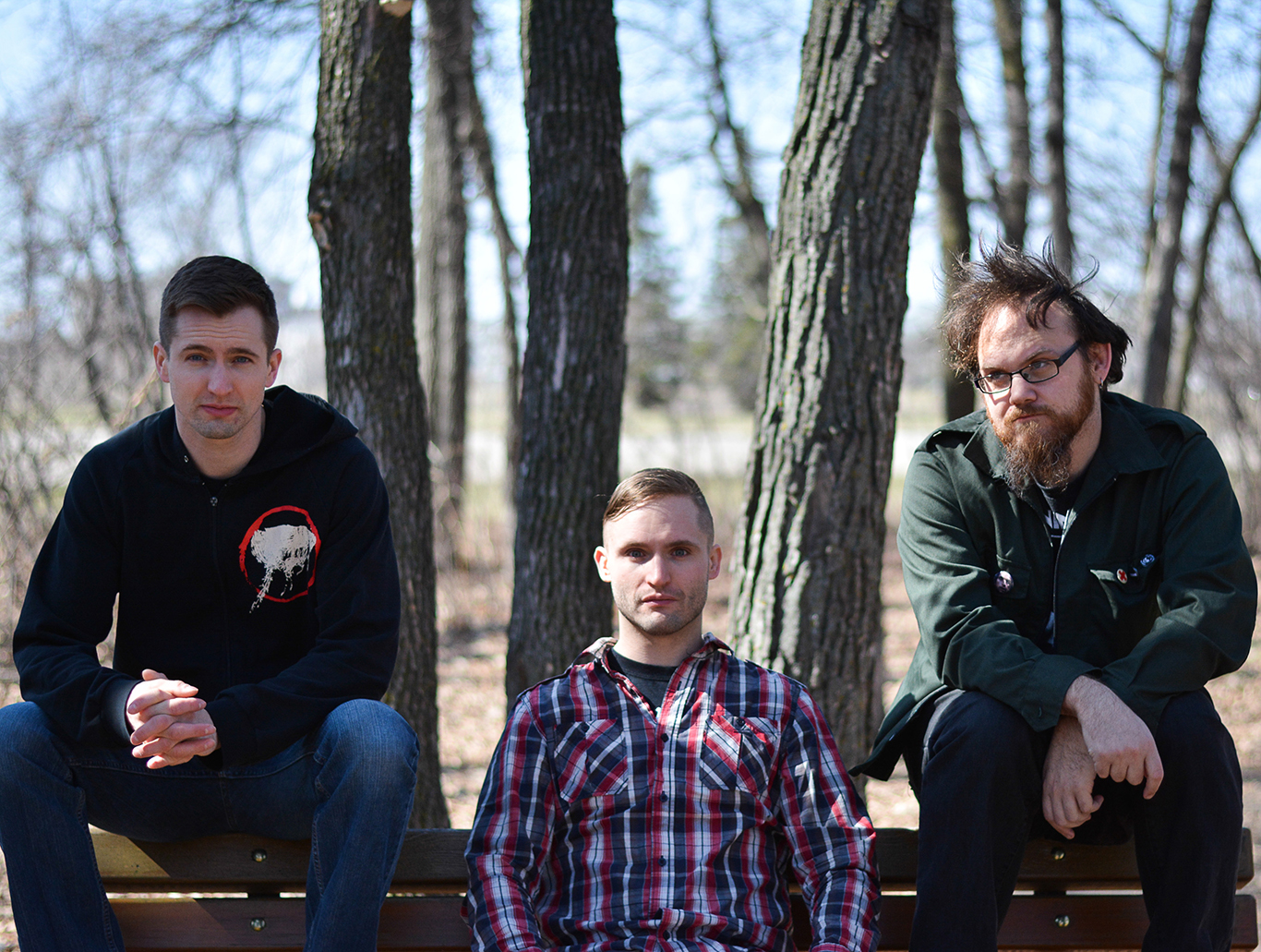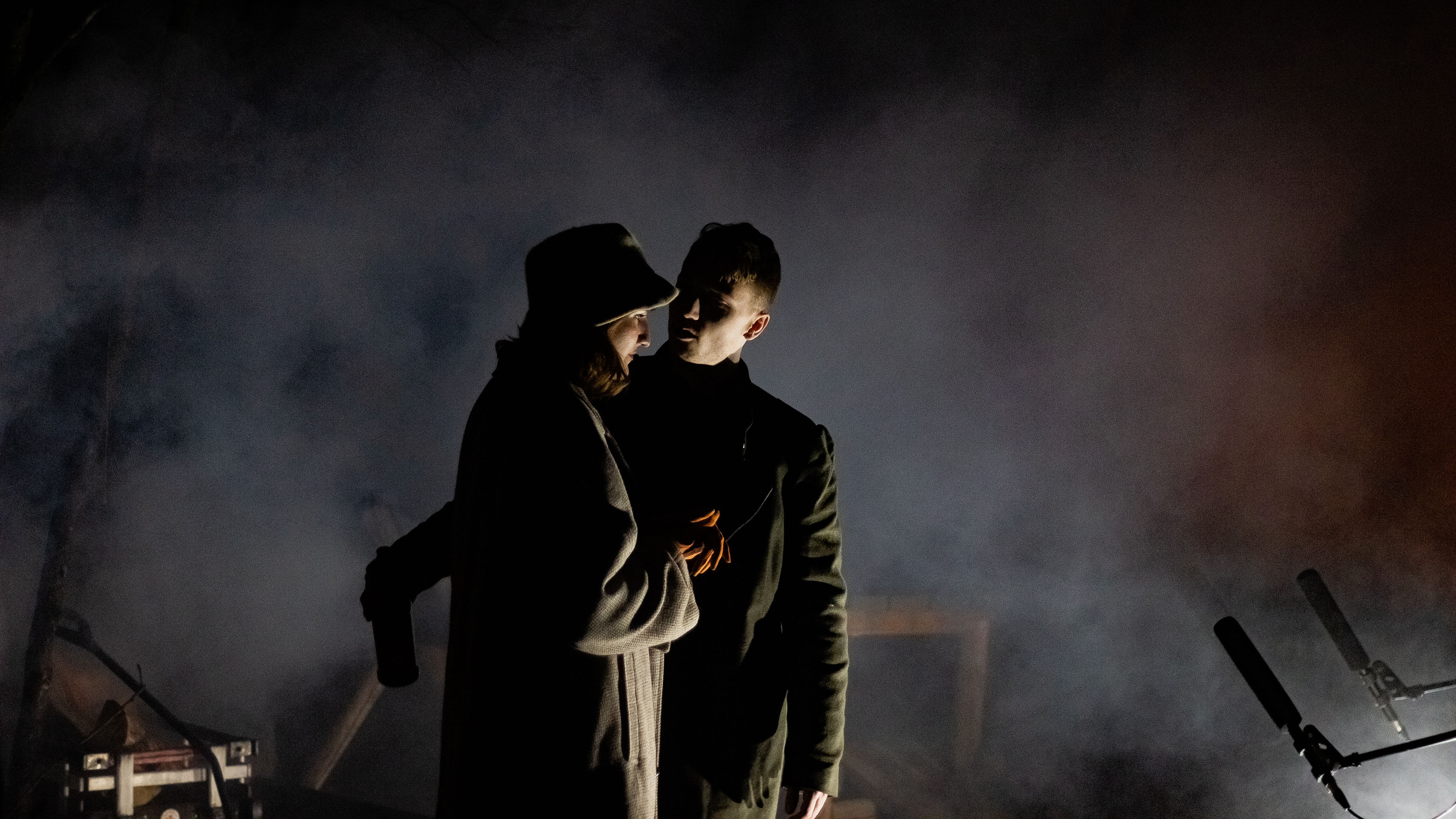Students and artists alike flooded the School of Art Student Gallery on March 21 for the opening reception of the Indigenous Student Showcase curated by school of art students Mackenzie Anderson Linklater and Kasey Pashe.
The exhibit, entitled Tawāw Pihtokī, displayed works from numerous Indigenous student artists and ran from March 20 to 27. Snacks provided during the reception included bannock made by Linklater.
Despite initial nervousness about the opening day, Pashe said it was “a really good time with so many people” and that she was excited for more of her classmates to visit and hear their feedback on it.
Both Linklater and Pashe are students in their final year of studies at the school of art. Linklater studies in the honours studio program, while Pashe is a student of art history. Using their joint connections, they were able to collect and curate pieces to bring the show to life.
“I had initially seen two paintings from artists who are at the school of art […] and I was so struck by those works and I was really inspired to put something together and get this shown. I’d known Kasey’s work with Gallery 1C03 and I knew this had to be a bigger thing than just me on Instagram,” said Linklater.
The showcase features a recurring theme of welcoming people inside, with the first piece hanging on the wall by Linklater entitled “Nikik Itwew Tansi,” meaning “Otter Says Hello.”
The piece, which is silkscreen on Stonehenge, is an image of an otter with a word bubble trailing from its mouth that says “Tansi.” It also serves as the basis for the promotional poster for the show, as Pashe replaced the word inside the dialogue bubble with the show’s title. The meaning of Tawāw Pihtokī is “welcome” or “come in” in Cree.
Linklater said that since both she and Pashe are Cree, there was a desire to title the showcase in Cree. After some searching, “welcome” and “come in” ended up feeling suitable to the project.
“We both just wanted a word to represent the welcoming feeling and openness to inviting everyone into our exhibition on campus,” said Pashe.
“We were going through different names and deciding which one to pick and I think that one sounded pretty good.”
The showcase included a wide range of works from paintings and silkscreen prints to sculptures, beadwork and embroidery. Many evocative pieces filled the gallery with themes touching on various Indigenous traditions, including a piece by Sunshine Levasseur that depicted a ribbon skirt and a pair of moccasins, aptly named “Ribbon Skirt and Moccasins.”
The artists in attendance and the two curators themselves wore ribbon skirts to represent and proudly display their Indigenous heritage and culture. Ribbon skirts, Linklater said, are worn in many different contexts.
“So much of it is about being proud of who you are and proud of yourself whether you’re Anishinaabe, Cree or Métis,” said Linklater. “I think when we talk about decolonizing art galleries, or universities for that matter, being able to, as Indigenous students, show that identity and be proud of that, that’s what that’s doing.”
With the exhibit having ended and graduation around the corner, the experience of hosting and curating Tawāw Pihtokī left both Linklater and Pashe inspired to pursue art — as well as curation in Pashe’s case — outside of school, even curation in, as they move to the next phase of their lives.





